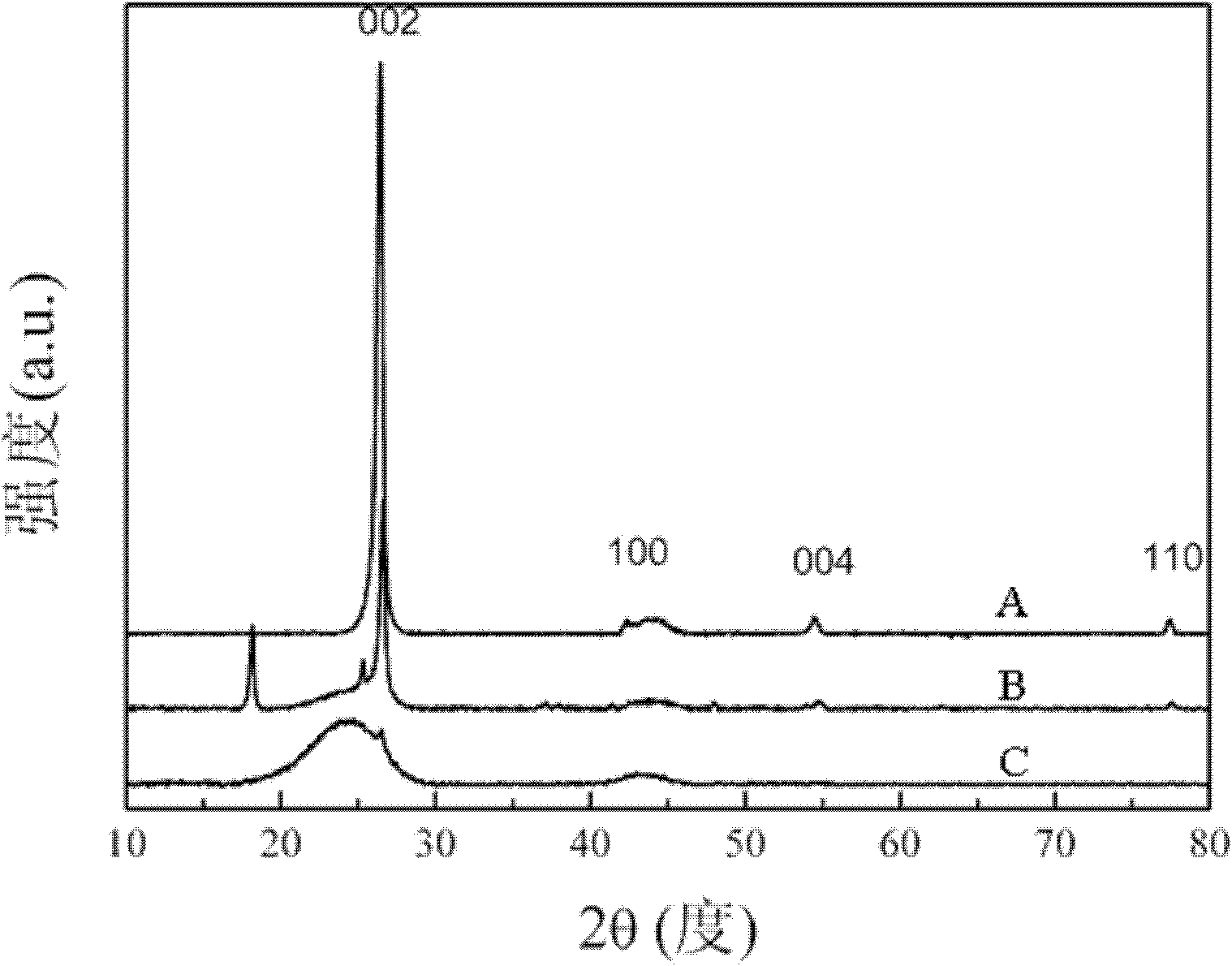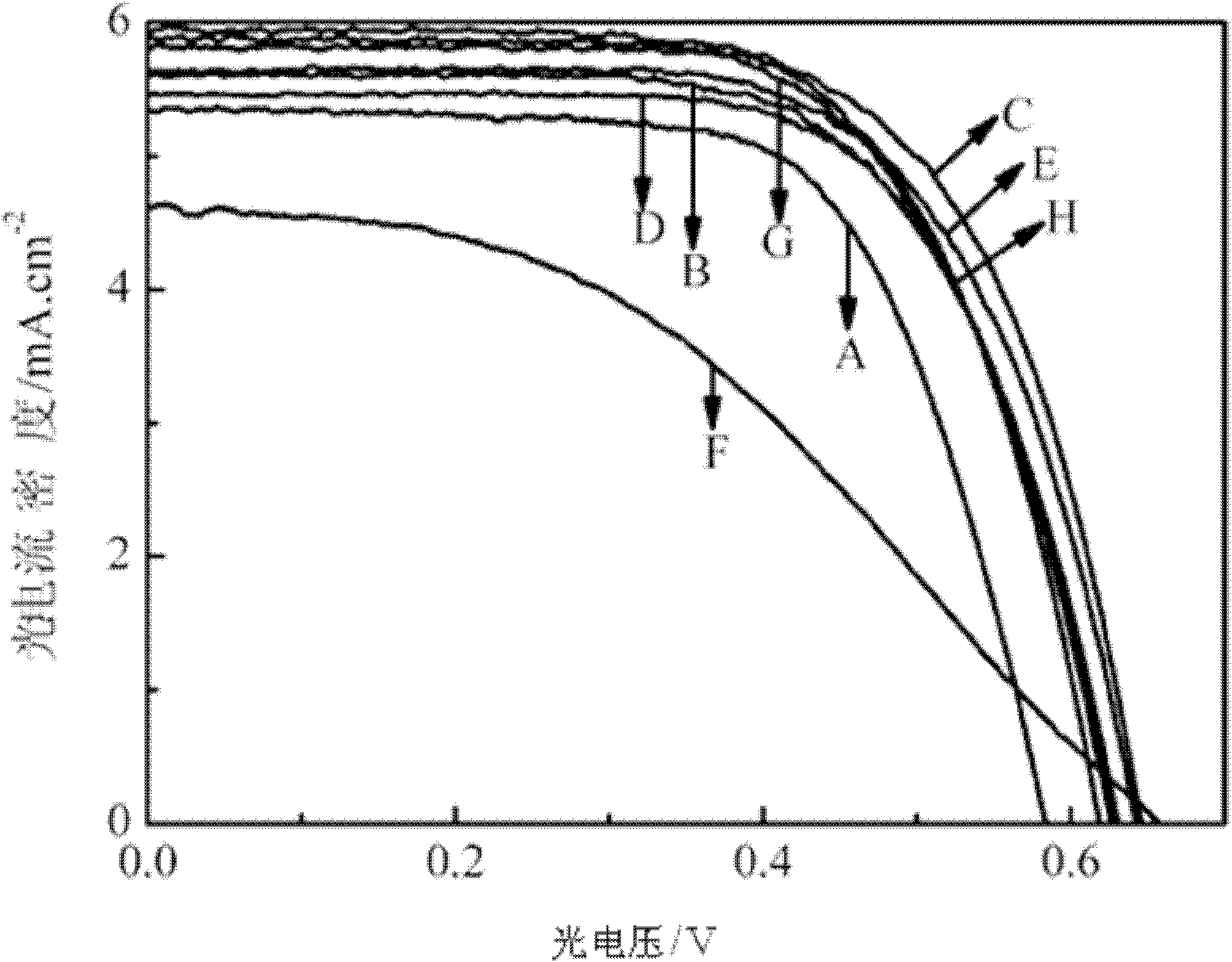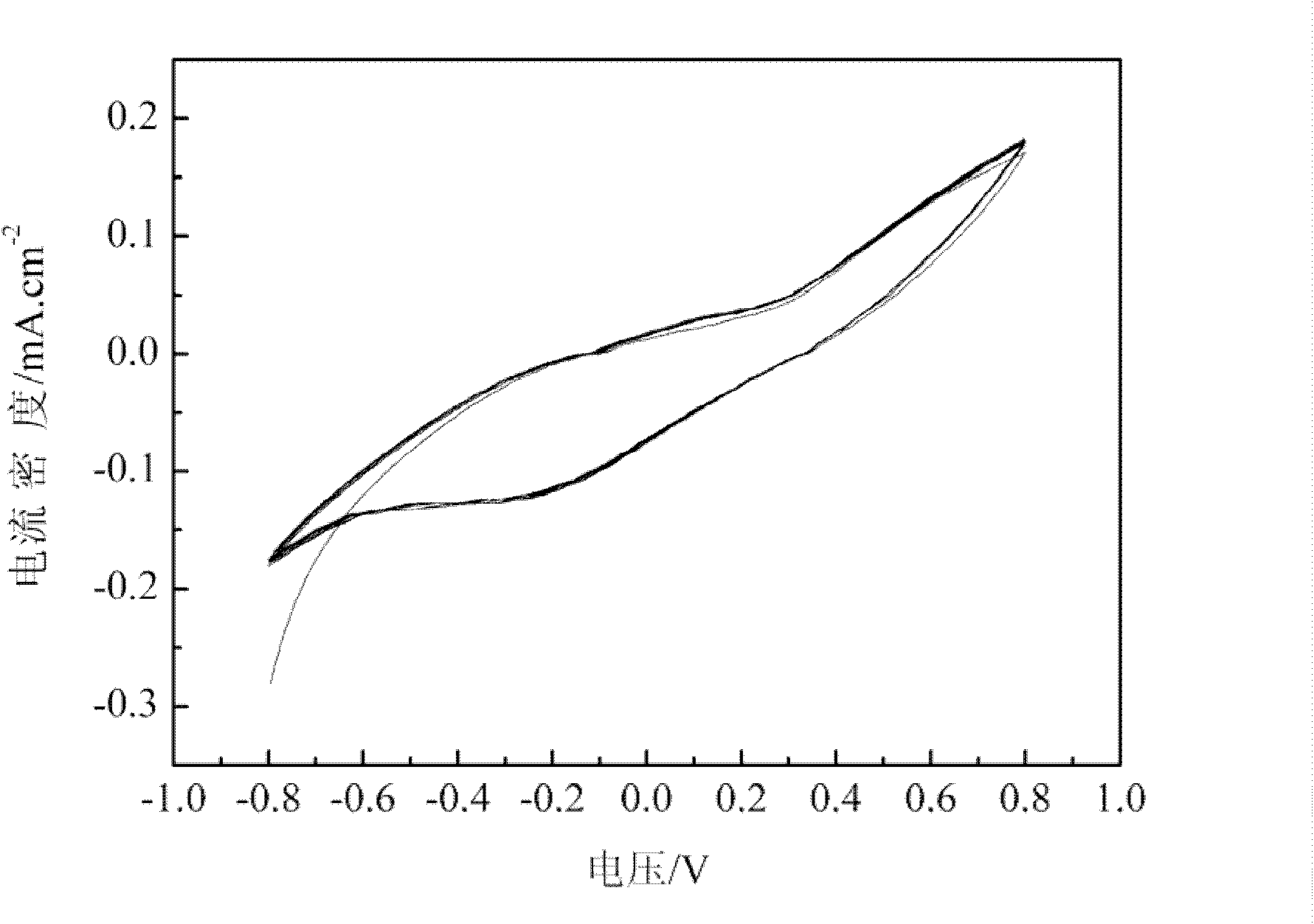Preparation method of graphene and conductive carbon black composite material counter electrode
A technology of conductive carbon black and composite materials, applied in electrolytic capacitors, semiconductor/solid-state device manufacturing, circuits, etc., can solve the problems of complex preparation process of graphene conductive films, expensive platinum counter electrodes, and unfavorable large-scale use, etc. High photoelectric conversion efficiency, lower processing temperature, and less poisoning
- Summary
- Abstract
- Description
- Claims
- Application Information
AI Technical Summary
Problems solved by technology
Method used
Image
Examples
specific Embodiment approach 1
[0014] Specific embodiment one: the preparation method of a kind of graphene and conductive carbon black composite material counter electrode of present embodiment is carried out according to the following steps:
[0015] One, be (1~80): the ratio of 20 to take graphene and conductive carbon black by mass ratio and mix to obtain mixture;
[0016] 2. The mass ratio of the mixture obtained in step one, polytetrafluoroethylene and N-methylpyrrolidone is (15~20): 1:100 and the mixture obtained in step one, polytetrafluoroethylene and N-methylpyrrolidone are weighed base pyrrolidone and put it into a ball mill, and mix evenly by ball milling to obtain a composite material slurry of graphene and conductive carbon black;
[0017] 3. Apply the graphene and conductive carbon black composite material slurry obtained in step 2 on the conductive glass by scraping, and then dry to obtain the graphene and conductive carbon black composite material counter electrode.
[0018] In Step 3 of t...
specific Embodiment approach 2
[0019] Specific embodiment 2: The difference between this embodiment and specific embodiment 1 is that in step 1, graphene and conductive carbon black are weighed and mixed to obtain a mixture according to the mass ratio of (1-3): 6. Others are the same as in the first embodiment.
specific Embodiment approach 3
[0020] Specific embodiment 3: The difference between this embodiment and specific embodiment 1 or 2 is that in step 2, ball milling is carried out for 1-4 hours under the condition that the rotating speed is 100-200 r / min. Others are the same as in the first or second embodiment.
PUM
| Property | Measurement | Unit |
|---|---|---|
| thickness | aaaaa | aaaaa |
Abstract
Description
Claims
Application Information
 Login to View More
Login to View More - R&D
- Intellectual Property
- Life Sciences
- Materials
- Tech Scout
- Unparalleled Data Quality
- Higher Quality Content
- 60% Fewer Hallucinations
Browse by: Latest US Patents, China's latest patents, Technical Efficacy Thesaurus, Application Domain, Technology Topic, Popular Technical Reports.
© 2025 PatSnap. All rights reserved.Legal|Privacy policy|Modern Slavery Act Transparency Statement|Sitemap|About US| Contact US: help@patsnap.com



